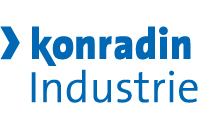The Acron software tool has been specially designed for archiving plant data indelibly over long periods of time. It also complies with the requirements of ATV H260, the Hirthhammer Daily Log, the Technical Instructions on Wastes and Dr.Groche’s statistical analyses.
Dieter Barelmann
Anzeige
In einer Ära, in der die Chemieindustrie mit den Herausforderungen des Klimawandels und der Notwendigkeit einer nachhaltigen Entwicklung konfrontiert ist...
Operator control and monitoring systems only partially satisfy the requirements of modern standards with regard to production data acquisition (PDA) and logging. This gap is filled by the Acron software tool. It has a modular structure, is network-capable and is programmed in such a way that no system resources are taken up un-necessarily. Thanks to the standardised operator interface, both users and programmers can become thoroughly familiar with it within a very short time.
Acron’s central tasks
Acron’s most important tasks are acquiring, calculating and archiving process data. The software also logs this data indelibly. Among the other central elements of the program are:
• data compression according to various methods,
• designing custom report forms,
• generating reports,
• importing historical data from a tele-control network,
• presenting graphs with the aid of sophisticated tools.
The job of implementing these central tasks is shared by three different processes that are optimally tailored to requirements. The Provider is responsible for procuring and archiving the process data. The interactive, object-oriented form Designer takes care of the system configuration. The Reporter is an easy-to-operate tool for end users. It enters the manual values and calculates and compresses the process data. In addition, this module handles generation of the predefined reports (Fig.1).
Software configuration
The Acron software tool comprises a development module and a runtime module. In development mode, the report interfaces can be designed according to the requirements of the plant owner and the process variables parameterised. The software also includes import functionalities which make programming very straightforward. Extensive arithmetic functions are implemented and the order in which the reports are printed out is freely definable.
Report printing
Various types of report are available for logging and evaluating time-dependent process data. Special reports in accordance with the Hirthhammer Daily Log and statistical analyses based on Dr. Groche are possible in addition to day, week, month and year reports with freely programmable start and end times. The software also allows different scales to be presented clearly alongside one another. The graphics module includes bar charts and a logarithmic scale with a calculation function (e.g. for the pH value), as well as a percentile value calculation. The report printouts are time-controlled.
Maintenance and servicing
This module makes sure that the stipulated maintenance intervals are complied with by monitoring running and operating times as well as switching cycles. If the threshold value for a maintenance interval is reached, for instance, the equipment concerned is entered in a report listing all due maintenance activities. If the maintenance interval is exceeded, an alarm is generated by the software automatically. Manual corrections are possible here too, because the equipment may have been replaced between two intervals.
Event and alarm processing
All automatically or manually recorded events and alarms are saved in a variable, cyclic store. Individual alarms can be localised with the aid of the search logic. It is possible to link various search criteria together, such as the time range within which the event or alarm occurred, the alarm type, the alarm variable, the user at the time the alarm occurred and the user who acknowledged the event or alarm. All events and alarms are printed out in a day report and entered in the separate alarm statistics for each process variable. These statistics then form the basis for day, month and year reports containing information about the number and duration of all the recorded alarms.
Extensive load curves
Acron includes an extensive load curve functionality for daily operating logs. All the available options have been extended to allow them to be used online (representation of instantaneous values). The data for the last three months can be displayed in this online mode. There is no restriction on the number of load curves on a graph that can be updated continuously and automatically with the current process data. The user can choose any of several compression levels for displaying this data. In the historical view, any time range between one minute and ten years can be selected for load curves. In addition, defined graphs can be saved in an unlimited catalogue and retrieved again later on.
Flexible software
Owing to its modular structure, the software is ideal for use in many different branches of industry. Water and waste-water engineering, for which Acron was originally deve-loped, is presently just one of its numerous fields of application. Its potential extends from leachate purification plants and bre-weries through combined heat and power stations, refuse incineration plants, the food processing sector and the chemical industry to energy metering and instrumentation and control systems for tunnels. Its ability to log indelibly is a critical factor in all these applications.
Interfaces to other systems
Thanks to its open system structure, Acron can communicate in a variety of ways. The standard MS-Windows interfaces (Dynamic Data Exchange DDE), ODBC and an open API (Application Programmers Interface) are the communications methods most commonly resorted to. The software can thus be linked up to almost any process control and visualisation system and then communicate with different PLC systems. The interface used most frequently to date is Dynamic Data Exchange, which is available on practically every control system. Acron is currently employed, for example with FIX Dynamics, FIX 32 InTouch, Fix, Wizcon, WinCC, RS-View, the Bosch visual display system, Satt Graph (ABB/Alfa Laval), the Babcock control system and Applicom communications solutions (Fig. 3).
PDA without a control system
Some plants which are too small to be equipped with a control system are never-theless required by law to keep indelible logs. Acron can be used in such cases to produce a PC-based daily operating log. Data can be entered either manually or automatically from the PLC via a communications driver. This also has the advantage that the plant is already prepared in the event that a control system is installed at some time in the future.
Interface to telecontrol systems
Many small-scale environmental technology plants are fitted out with a similarly small programmable controller. This controller is linked to a control centre via a telecontrol network. The data from the outlying stations is collected locally and usually transferred once every day. A special file interface has been implemented in Acron, to permit historical data to be transferred with a time stamp. This interface supports DBASE and CSV formats. The data can be accepted either manually or automatically.
Data security and redundancy
Almost all large-scale plants require a higher level of data security with multi-user systems. Acron’s redundancy system was developed to take account of this need. The database is managed simultaneously on different computers, which align their data continuously and automatically update it in the event of a system failure.
Videc
Fax: ++49/421/3 37 95 61
Further information cpp-222
Unsere Webinar-Empfehlung
Die Websession „Wasserstoff in der Chemie – Anlagen, Komponenten, Dienstleistungen“ (hier als Webcast abrufbar) zeigt technische Lösungen auf, die die Herstellung und Handhabung von Wasserstoff in der chemischen Industrie sicher machen und wirtschaftlich gestalten.
Ob effizienter…
Teilen:
















